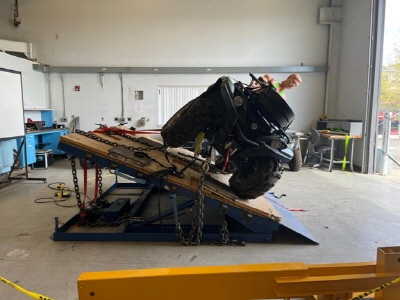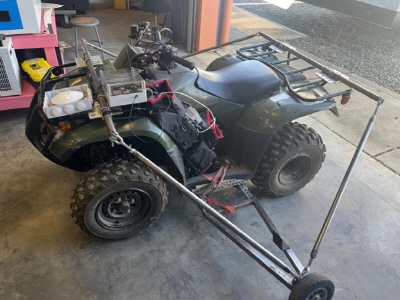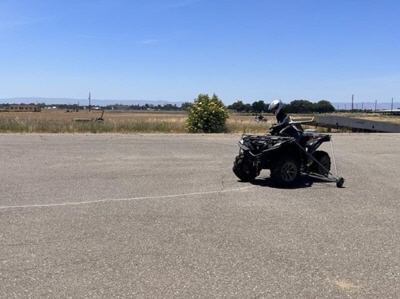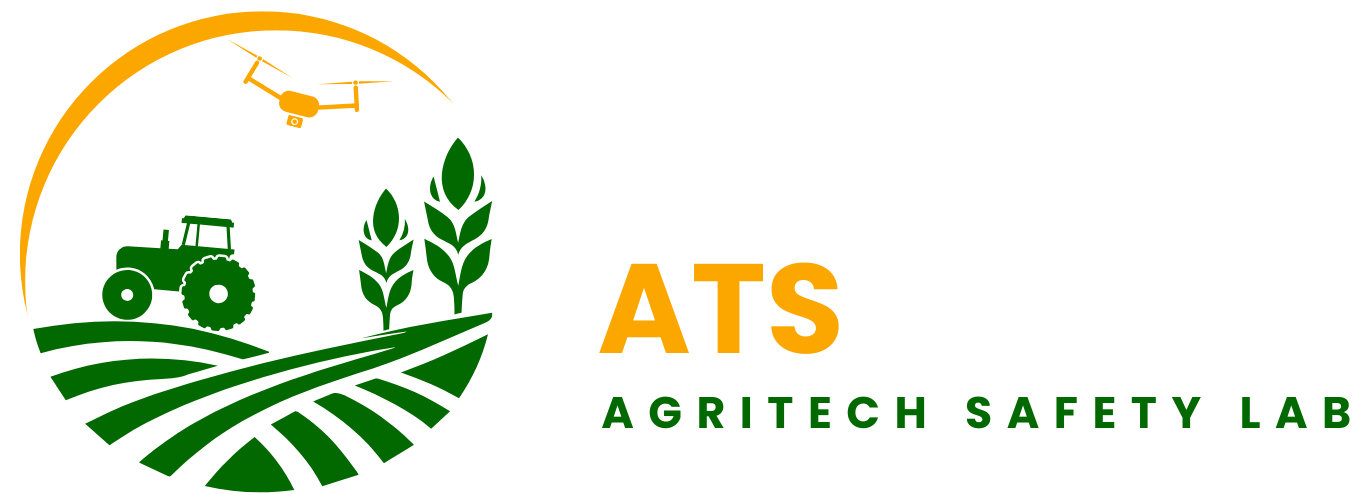Agricultural All-Terrain Vehicle Safety
We developed an ATV safety test station for experimental evaluations of ATV stability and the performance of various roll bar designs on agricultural ATVs. CDC/NIOSH funded this project as part of the Western Center for Agricultural Safety and Health (WCAHS)'s five-year competitive renewal.
The study includes extensive infrastructure development, including a tilt table, autonomous ATVs, crash test terrain, crash tests, and extensive fieldwork to evaluate different models of ATVs and roll bars. The study includes four sections:
Static Stability
Static stability is measured using wireless scales and digital inclinometers to determine ATV stability under different types, locations, and amounts of loads.
This helps identify potential tipping points before an ATV becomes unstable.

Dynamic Stability
Dynamic stability is measured using a sensing setup that includes IMU, and optical encoder under several tests, including J-turn, bump, and circular driving tests.
This helps identify potential tipping points before an ATV becomes unstable.

Rollover Simulation (Experimental)
Use real ATVs in controlled environments to test rollover risks under different conditions (e.g., speed, load, terrain).
Helps in evaluating the effectiveness of protective devices and rider safety techniques.

Rollover Simulation (Computational)
Used computer simulations to predict the rollover risk
Helps in providing recommendations for safer operational conditions for agricultural ATV users


